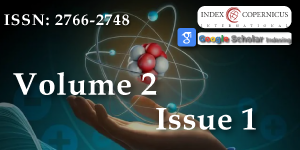Bio-moleculear thermal oscillator and constant heat current source
Main Article Content
Abstract
The demand for materials and devices that are capable of controlling heat flux has attracted many interests due to desire to attain new sources of energy and on-chip cooling. Excellent properties of DNA make it as an interesting nanomaterial in future technologies. In this paper, we aim to investigate the thermal flow through two sequence combinations of DNA, e.g, (AT)4 (CG)4 (AT)4 (CG)4 and (CG)8 (AT)8. Two interesting phenomena have been observed respectively. In the first configuration, an oscillatory thermal flux is observed. In this way, an oscillating heat flux from a stationary spatial thermal gradient is provided by varying the gate temperature. In the second configuration, the system behaves as a constant heat current source. The physical mechanism behind each phenomenon is identified. In the first case, it was shown that the transition between thermal positive conductance and negative differential conductance implies oscillatory heat current. In the latter, the discordance between the phonon bands of the two coupled sequences results in constant thermal flow despite of increasing in temperature gradient.
Article Details
Copyright (c) 2019 Panahinia R, et al.

This work is licensed under a Creative Commons Attribution 4.0 International License.
Maldovan M. Sound and heat revolutions in phononics. Nature. 2013; 503: 209-217. PubMed: https://www.ncbi.nlm.nih.gov/pubmed/24226887
Wang L, Li B. Thermal memory: a storage of phononic information. Phys World. 2008; 21: 27.
Terraneo M, Peyrard M, Casati G. Controlling the Energy Flow in Nonlinear Lattices: A Model for a Thermal Rectifier. Phys Rev Lett. 2002; 88: 094302.
Yang N, Gang Z, Li B. Carbon nanocone: A promising thermal rectifier. App Phys Lett. 2008; 93: 243111.
Tian H1, Xie D, Yang Y, Ren TL, Zhang G, et al. A novel solid-state thermal rectifier based on reduced graphene oxide. Sci Rep. 2012; 2: 523 PubMed: https://www.ncbi.nlm.nih.gov/pubmed/22826801
Li B, Wang L, Casati G. Negative differential thermal resistance and thermal transistor. App Phys Lett. 2006; 88: 143501.
Mendonca MS, Pereira E. Effective approach for anharmonic chains of oscillators: Analytical description of negative differential thermal resistance. Phys Lett A. 2015; 379: 1983-1989. PubMed:
Wang L, Li B. Thermal Memory: A Storage of Phononic Information. Phys Rev Lett. 208; 101: 267203.
Wang L, Li B. Thermal Logic Gates: Computation with Phonons. Phys Rev Lett. 2007; 99: 177208.
Yakushevich LV. Nonlinear physics of DNA. John Wiley & Sons. 2006.
Dauxois T, Peyrard M, Bishop AR. Entropy-driven DNA denaturation. Phys Rev E. 1993; 47: R44.
Voulgarakis NK, Redondo A, Bishop AR, Rasmussen KØ. Probing the Mechanical Unzipping of DNA. Phys Rev Lett. 2006; 96: 248101
Weber G, Jonathan WE, Neylon C. Nat Phys. 2009; 5: 769.
Karakare S, Kar A, Kumar A, Chakraborty S. Patterning nanoscale flow vortices in nanochannels with patterned substrates. Phys Rev E. 2010; 81: 016324.
Lemak AS, Balabaev NK. On The Berendsen Thermostat. Mol Sim.1994; 13: 177-187.
Hoover WG. Canonical dynamics: Equilibrium phase-space distributions. Phys Rev A. 1985; 31: 1695.
Dhar A. Heat transport in low-dimensional systems. Adv Phys. 2008; 57: 457-537.
Savin AV, Gendelman OV. Heat conduction in one-dimensional lattices with on-site potential. Phys Rev E. 2003; 67: 041205.
Dhar A. Comment on “Can Disorder Induce a Finite Thermal Conductivity in 1D Lattices?” Phys Rev Lett. 2001; 87: 069401.
Gotsmann B, Menges F. US. Patent. 2016L; 20,160,112,050.
Behnia S, Panahinia R. Designing thermal diode and heat pump based on DNA nanowire: Multifractal approach. Phys Lett A. 2017; 381: 2077-2084.
Wu J, Wang L, Li B. Heat current limiter and constant heat current source. Phys Rev E. 2012; 85: 061112.

